In order to facilitate the best possible discussion, InHouse and the ACC looked for counsel from a cross-section of Canadian companies. Counsel were sought from legal departments both large and small, from a wide range of industries and seniority levels.
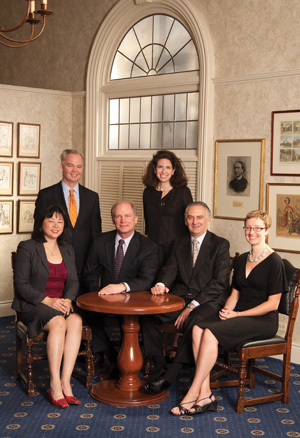 Participants in this year’s roundtable, moderated by InHouse editor Kelly Harris, included ACC president Fred Krebs; David Allgood, executive vice president and general counsel of the Royal Bank of Canada; Jim Vibert, senior counsel with computer and office products giant Hewlett-Packard (Canada) Co.; Shelley Lloyd, legal counsel with insurance company Aon Canada Inc.; Nicole Broley, legal counsel with professional services firm Deloitte & Touche LLP; and Leslie Rosenthal, general counsel for video game maker DreamCatcher Interactive Inc.
Participants in this year’s roundtable, moderated by InHouse editor Kelly Harris, included ACC president Fred Krebs; David Allgood, executive vice president and general counsel of the Royal Bank of Canada; Jim Vibert, senior counsel with computer and office products giant Hewlett-Packard (Canada) Co.; Shelley Lloyd, legal counsel with insurance company Aon Canada Inc.; Nicole Broley, legal counsel with professional services firm Deloitte & Touche LLP; and Leslie Rosenthal, general counsel for video game maker DreamCatcher Interactive Inc.
Also this year, watch video clips from the event on our web site.
Video one: Legal department stressors
Video two: Cost-control strategies
Video three: Staffing arrangements
Video four: Outside counsel
Video five: Outsourcing & offshoring
INHOUSE: How are new regulatory or legislative changes affecting your legal departments?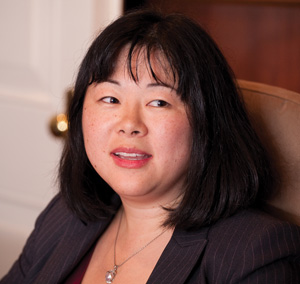 SHELLEY LLOYD: I find that there are many more questions from our internal clients, basically the company that we serve, about how to understand the changing regulations; how they impact us. There is probably more of an expectation, too, that we have a good understanding of the impact without having first to go to outside counsel. So [there are] more research demands and more quick answers expected or hoped for from our department.
SHELLEY LLOYD: I find that there are many more questions from our internal clients, basically the company that we serve, about how to understand the changing regulations; how they impact us. There is probably more of an expectation, too, that we have a good understanding of the impact without having first to go to outside counsel. So [there are] more research demands and more quick answers expected or hoped for from our department.
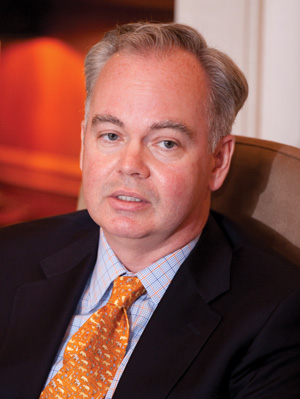 JIM VIBERT: There are a couple of specific areas that, despite the fact both of them have been around for a while now, the Sarbanes-Oxley [Act] in general, strengthening of financial controls. Despite the fact that our finance department is fantastic and we have a great revenue recognition team, there is just a lot of knowledge that needs to be developed within the legal team to ensure we are compliant; a lot more interaction between businesses, legal, and finance.
JIM VIBERT: There are a couple of specific areas that, despite the fact both of them have been around for a while now, the Sarbanes-Oxley [Act] in general, strengthening of financial controls. Despite the fact that our finance department is fantastic and we have a great revenue recognition team, there is just a lot of knowledge that needs to be developed within the legal team to ensure we are compliant; a lot more interaction between businesses, legal, and finance.
Even though they have been around for a few years, that doesn’t seem to be going away. Every single transaction has that element, which, 10 years ago, it really didn’t exist to that extent. And the other area that is significant, and it still has a large increase in workload, is data privacy security/subset of confidentiality questions. They seem to come up on every single engagement we do.
Again, we have a great privacy team and they really know their stuff, but . . . each and every time, every customer of ours has their own unique spin on what they need and how they think we should accommodate their needs. And we naturally have our own view of what we can do and what level of risk we need to take on an engagement. And, as I said, each engagement with a customer is that much more complex than it used to be.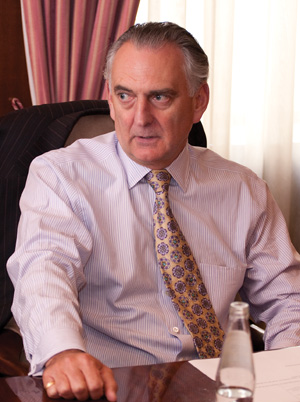 DAVID ALLGOOD: Well, in the financial institution world, obviously with the crisis, we have had as much legislation, new and proposed, as anybody. It has really forced us, in a sense, internally to re-balance the kind of work that we do because we feel that the people who are in-house often have a much better understanding of how the businesses are going to have to adapt to a new piece of legislation, or are in a position, through our industry associations, to comment on proposed legislation. And so, one of the things that we have been readjusting is the focus of some of our internal people to deal with the incoming and proposed legislation, and have looked to outside resources or contract people to do some of the more regular work because we are generally resource-constrained at any particular time.
DAVID ALLGOOD: Well, in the financial institution world, obviously with the crisis, we have had as much legislation, new and proposed, as anybody. It has really forced us, in a sense, internally to re-balance the kind of work that we do because we feel that the people who are in-house often have a much better understanding of how the businesses are going to have to adapt to a new piece of legislation, or are in a position, through our industry associations, to comment on proposed legislation. And so, one of the things that we have been readjusting is the focus of some of our internal people to deal with the incoming and proposed legislation, and have looked to outside resources or contract people to do some of the more regular work because we are generally resource-constrained at any particular time.
There has been a reprioritization, but there has also been reaching out to find some additional resources, so that the individuals, whether it is credit cards or whether it is mortgages, or other changes being proposed in the financial institutions area, those internal people who are really the experts and can focus on letting our businesses know what has come, interpreting it for them, but also dealing with, in our case, the Canadian Bankers Association, to influence proposals that the government has put forward in some of the new areas.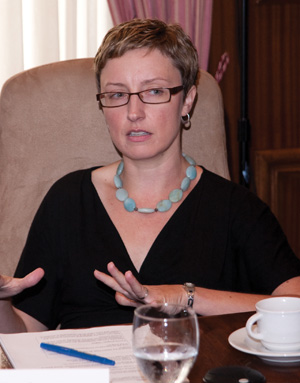 NICOLE BROLEY: We have a ton of . . . internal people, not necessarily within the in-house legal team but also just within the organization, who have tremendous understanding of those kinds of pieces of legislation. So they assist in a way the legal team, but the legal team obviously is responsible for trying to facilitate the business as much as possible, too. And to David’s point, I think we are at a point where there is an expectation on the in-house team that they have an understanding of the legislative changes, that they have an appreciation for how that impacts the business.
NICOLE BROLEY: We have a ton of . . . internal people, not necessarily within the in-house legal team but also just within the organization, who have tremendous understanding of those kinds of pieces of legislation. So they assist in a way the legal team, but the legal team obviously is responsible for trying to facilitate the business as much as possible, too. And to David’s point, I think we are at a point where there is an expectation on the in-house team that they have an understanding of the legislative changes, that they have an appreciation for how that impacts the business.
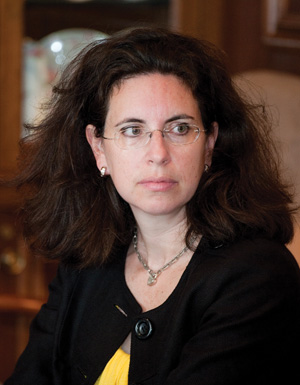 LESLIE ROSENTHAL: Ninety per cent of our sales are from the United States. So my focus is more North American as opposed to just Canadian. Of course, certain things have affected our workplace, such as [Personal Information Protection and Electronic Documents Act] when it came into effect a few years ago. But generally I am more concerned with the impact of our products across North America.
LESLIE ROSENTHAL: Ninety per cent of our sales are from the United States. So my focus is more North American as opposed to just Canadian. Of course, certain things have affected our workplace, such as [Personal Information Protection and Electronic Documents Act] when it came into effect a few years ago. But generally I am more concerned with the impact of our products across North America.
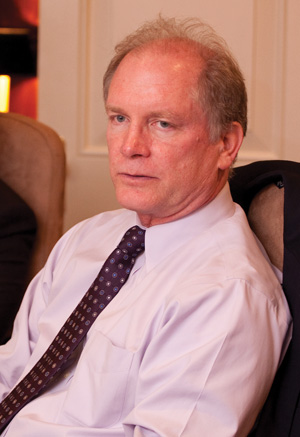 FRED KREBS: ACC is a global association, and the issues that you are talking about here are global. I mean, certainly in the United States . . . but we are hearing the same types of concerns being expressed by the Australians and the Australian Corporate Lawyers Association, and some things I have read that they have published. Also, our European chapter, I mean, these issues about the increased regulatory environment, combined with the economic compression of resources. You are facing them here, and other in-house counsel are facing them around the world.
FRED KREBS: ACC is a global association, and the issues that you are talking about here are global. I mean, certainly in the United States . . . but we are hearing the same types of concerns being expressed by the Australians and the Australian Corporate Lawyers Association, and some things I have read that they have published. Also, our European chapter, I mean, these issues about the increased regulatory environment, combined with the economic compression of resources. You are facing them here, and other in-house counsel are facing them around the world.
INHOUSE: What strategies are you employing to meet these demands?
VIBERT: In the last 10 years, and particularly in the last five, law firms in particular have been great at disseminating short summaries of changes in the law, or pending changes in the law, or . . . case decisions, or just . . . interesting areas that affect your company, or your field of business.
I think I probably get half a dozen news feeds a day, and, you know, probably actively read 10 articles, and probably only a five-to-10-minute read each, but those news feeds and that continuing legal education is invaluable. It would have been very, very difficult to keep up in this way 10 years ago.
ALLGOOD: The ACC puts out something called the ACC Newsstand, which I get every day . . . and [you can] scan for those areas where something has come up that you want to look at, and they then directly feed into the particular law firm’s longer version. If the headline catches your attention on a privacy issue, or a regulatory issue, or a case, that it is these aggregators . . . rather than getting, 10 or 15 e-mails from the law firms, you can go to an aggregation site and it is a very quick and efficient way to have a look at what has been happening, and what people have been writing about.
KREBS: It actually has been one of our most popular services, and it allows the individual to select their topic too, so you don’t have to get everything. You can customize [it to the] practice area to receive the information in the newsletter, and it has been exceptionally well-received.
BROLEY: I have to say I get that every day as well, and there is hardly a day that goes by when I don’t click on at least one of the articles in there . . . There was one not long ago, I think on occupational health and safety, something that I would not ordinarily think of myself. But it was just, “pending legislative changes” popped up, and I thought, “OK. Well, that is . . . a good thing to have on your radar screen as it goes forward.” And it was just on a first reading. And so, it was something in the back of my mind that I will put a little note down to follow up on that, without that service, may not have triggered. So it is very helpful.
LLOYD: It also helps to highlight some of the practising experts in various fields. If we do have something specific to go to external counsel on, sometimes a particular article will allow us to know who to look to for some guidance.
On the point of trying to get the most for our money, when we do go to external counsel on some of these regulatory issues, usually we have tried to narrow it down a bit by speaking with our folks in the U.S., or looking at what resources we have in-house before we go and ask that question.
VIBERT: Exactly. Or even when you do go to external counsel, one of the first things I ask about is, “What have they already published?” so I am not being charged for something that has already been distributed, because maybe that is all I really want to receive is just the basics. And if I want more detail, I can choose then to do a bit of research myself.
LLOYD: One thing that I have found on some of the insurance questions that we deal with at Aon is that some of the provincial regulators are actually quite accessible. Send an e-mail to the contact person on their web site and they actually respond back on specific questions. So that has been also a good time saver for us if it is a specific question that they are able to answer quickly. And then in terms of publications or information from law firms, those free breakfast seminars are always welcome.
INHOUSE: What are some of the strategies you are using to control costs overall?
ROSENTHAL: When I started, we actually didn’t have an inside counsel. I created the position, and I basically created the department. So our CEO was using outside counsel for everything. I basically weaned the company off of that. But, certainly when I started . . . he had created all of our, sort of our structure and our precedents. He walked me through everything. We went through a lot of transactions together, and then they basically let me go on my own. So I have reduced . . . the cost of outside counsel considerably. And now, I do tend to just use it in very serious situations in a litigation type of situation where . . . I will even draft, at times, the pleading, and then our outside counsel will review it. But I am always keeping in mind that I have to keep the costs down because I do have litigation experience anyway. I am able to draft the pleadings, and put together discovery, and do these things, so that our outside counsel doesn’t have to put so many hours into it.
VIBERT: The other thing that is helpful is to have a discussion with outside counsel about the type of resources that are going to be assigned. You tend to have a primary contact for any given area, but that doesn’t necessarily mean that you want that person working on that particular project. Our contacts tend to be . . . partner level to senior partner level, and often that is not the right resource. You need to be clear about the level of expertise you are looking for in a given project.
KREBS: Well, we are very familiar with this effort too. We refer to it as to reconnect cost and value, and we call it our ACC Value Challenge. And there is an effort to look at a variety of ways . . . both how law firms do business and how law departments do business, and to perhaps change the model a little bit, and to change the focus, and to get things thinking about ways that you would do business and do business differently, and to move away when possible and when it makes sense, to move away from the billable hour as the sole mechanism for billing.
INHOUSE: That covers outside counsel, but what about inside costs?
ALLGOOD: In our retail banking area, we have over, I guess close to 500 questions and answers, which are on our [Intranet] site, so that branch people and other operational people in the retail bank can go, look for the frequently asked questions, get answers that we keep Evergreen on a regular basis. And then . . . there is an escalation provision [if] they feel that doesn’t answer their question . . . we get a lot of very positive comments out of our whole branch network about their ability to solve a lot of problems and a lot faster, essentially with the client in front of them, than if they had to track down a lawyer, talk to the lawyer, [and] get the lawyer’s answer.
In a sense . . . have pushed back a lot of the fundamental . . . legal [decision-making] to the people who can make the decisions, who give them a lot of guidance through the [frequently asked questions]. But it has been a very useful approach.
KREBS: One of the important things here is . . . and to be thinking about this . . . it is a knowledge/management approach, but to be thinking about . . . for the lawyers to be thinking about systems and processes that allow you to stop reinventing the wheel over and over and over, and then allow using the Internet and technology that allows that dissemination, as David was talking about, that dissemination of knowledge in ways that, a few years ago, you couldn’t do, and now you can.
But you have to give some thought to, “Well, what types of things are appropriate? How to you do it? How do you keep it fresh?,” all of those kinds of things. But some with effort, you can make significant changes. And again, really, you are adding value, and you are enabling yourself to focus on other areas where it may be more important.
VIBERT: Exactly, over the short, medium term, law departments are actively involved when laws and regulations are first enacted. But the expectation is that, over time, if there is going to be a regularly recurring need, then the business needs to pick it up and operationalize.
Probably most of us have seen that with privacy, law departments actively involved at the very beginning and now each company has its own privacy office. Those folks are as well versed as many of the lawyers are, and in the privacy laws, both within their own jurisdiction and others, and more importantly, how to operationalize it. And then they use the law department, kind of as David said, then as an escalation point, but not as an operating arm of the company for that particular issue.
KREBS: But one of the things in this, it is not just the other departments, and the other employees, and the company management, and other divisions that you sometimes have to get to change, it is yourself or your own lawyers because frequently they get comfortable [in] doing, and they like doing this, and [are] somewhat resistant to change.
ALLGOOD: Change management is a huge ongoing problem . . . not a problem, it is a challenge that you need to address. And, without giving too much of a plug to Richard Susskind . . . he wrote this book called The End of Lawyers? At least it had a question mark at the end of it. But I have an operating committee of about 10 senior lawyers, and then I bought them all copies and made them read the book. Then I told them we are going to have a book club meeting a month later, which we had, and talked about the book in the context of both the management of our internal resources, but also the management of our external resources. Because the Susskind book is quite focused on external counsel and the way in which the legal profession should evolve to survive, according to his theory.
BROLEY: Every year, we sit down . . . and the legal group looks at basically the business: What we do within the context of the business. What areas do we focus on? How much time do we spend in those areas? Do we want to? . . . Is it still value-add to spend time in those areas? Should we start thinking about reprioritizing? What do we anticipate is going to be the busiest in terms of the next year? Where do we see most of our time going?
Each year we . . . stop and say, “Does this make sense? This is what we did last year. Does this make sense next year? And if it doesn’t, why doesn’t it make sense, and how can we improve it.” And so, I think that is a very valuable lesson for all of us, to stop within our own practice, where you should think about it.
But I think within the larger group as well, “Where are we adding value to the business?” . . . at the end of the day, in-house counsel, that is your value . . . you have to add value. Otherwise, you know, why are you there? So I think it is essential that you kind of stop and think about whether or not what you did last year is what you should be doing next year.
LLOYD: We are benefiting from occasionally having a summer student come into our rather small group, or having a lawyer come in from a firm that we use on a secondment basis. I think there is a lot of benefit both ways. First of all, lawyers in law firms are sometimes curious to see what life is like as an in-house lawyer, all the wonderful fantastic things they have heard about our lives, and lots of late-night hours, and so on. And we certainly benefit from . . . bringing in their experience from a private practice standpoint. And then for students, they are always very eager and can handle a lot of the research work that we could get bogged down in, especially if it is something on a rush basis that requires just simple research, and you are dealing with some business-related deadlines that take you away from those tasks. We have benefited greatly. And there is certainly a cost savings as well to having students and secondment lawyers.
ROSENTHAL: I was also dealing on a matter where somebody was representing something that could become litigious, and the lawyer that was representing the outside party clearly . . . had no understanding of our business in his discussions with me. And then when I looked up on this law firm’s web site who I am speaking to, who has been phoning me with these ridiculous arguments, he called himself a video game expert. . . . I am in a field that has become extremely, I guess, lucrative, and I just find that this is very specific to my situation.
But all these law firms, they will sometimes respond to trends in the marketplace with their own little group that will be dedicated to that area. So, a lot of the, I guess, technology, intellectual property, trademark, copyright lawyers are now . . . a subgroup are calling themselves video game experts and they have a video game group. And I guess it really bothered me because . . . clearly, this gentleman had no idea what he was talking about and I felt like people like that would benefit from this type of secondment situation, where they could actually see what goes on. And I guess it really bothered me that people do call themselves an expert in these areas. And the law firms, who similarly have no idea about this type of industry because it is so new, will feed into that.
INHOUSE: What are some other tools you are using to control legal spend?
LLOYD: Well, just as our business groups on the sales side have been asked by external clients to respond to [request for proposals] a little more often than before the economy turned, we conducted an RFP-type process for our panel counsel . . . there were a number of larger firms that we already knew we would probably continue a relationship with. But then on a regional basis across the country, there were some smaller firms that we wanted to be able to call upon if there was litigation specific to that jurisdiction because we recognized in a lot of cases that the big city Toronto lawyer is not going to be welcome in the local courtroom.
And so, we wanted to have regional expertise. So, we did do sort of an RFP process. And we did find that the law firms were responsive and were trying to address the expertise and cost needs of our department.
VIBERT: In Canada . . . we didn’t go through the RFP process, but we approached each firm a number of years ago and have discounts off of normally charged rates for the work that we sent them. And that being said, it is just something that is part of our culture. It is not something that . . . we are going to wait for hard times to try and drive cost savings. It is kind of . . . a daily thing. And as times pick up, we are still going to be doing it.
KREBS: Certainly the things like discounts and blended rates and things. They all come out of the billable hour and relate to that. And there has been significant pressure in that area. But we are also seeing change to move away from the billable hour, and to look at ways. But this requires new ways of thinking by both the inside and the outside counsel, because for most in-house lawyers that is the only way they have ever thought or been exposed to a business model and thought that way.
And so, they need to develop ways to value and determine what their cost structure is, how they value it, [and] what they wish to pay. And then outside firms also have to be willing to make changes and look at how they do business and change in their business models. And we are seeing that, indeed, for . . . maybe the smaller departments . . . I would say, in some ways the firms are somewhat ahead of some of . . . ahead of the willingness to offer and to explore new ways to do business.
And some of the reticence has actually been from some of the smaller departments and folks, because they are not quite sure, “How am I going to do this?” And, “How do I value this?” And so, there is a learning process that is taking place on both sides.
Recording and transcription services provided by Victory Verbatim Reporting Services Inc. of Toronto.







